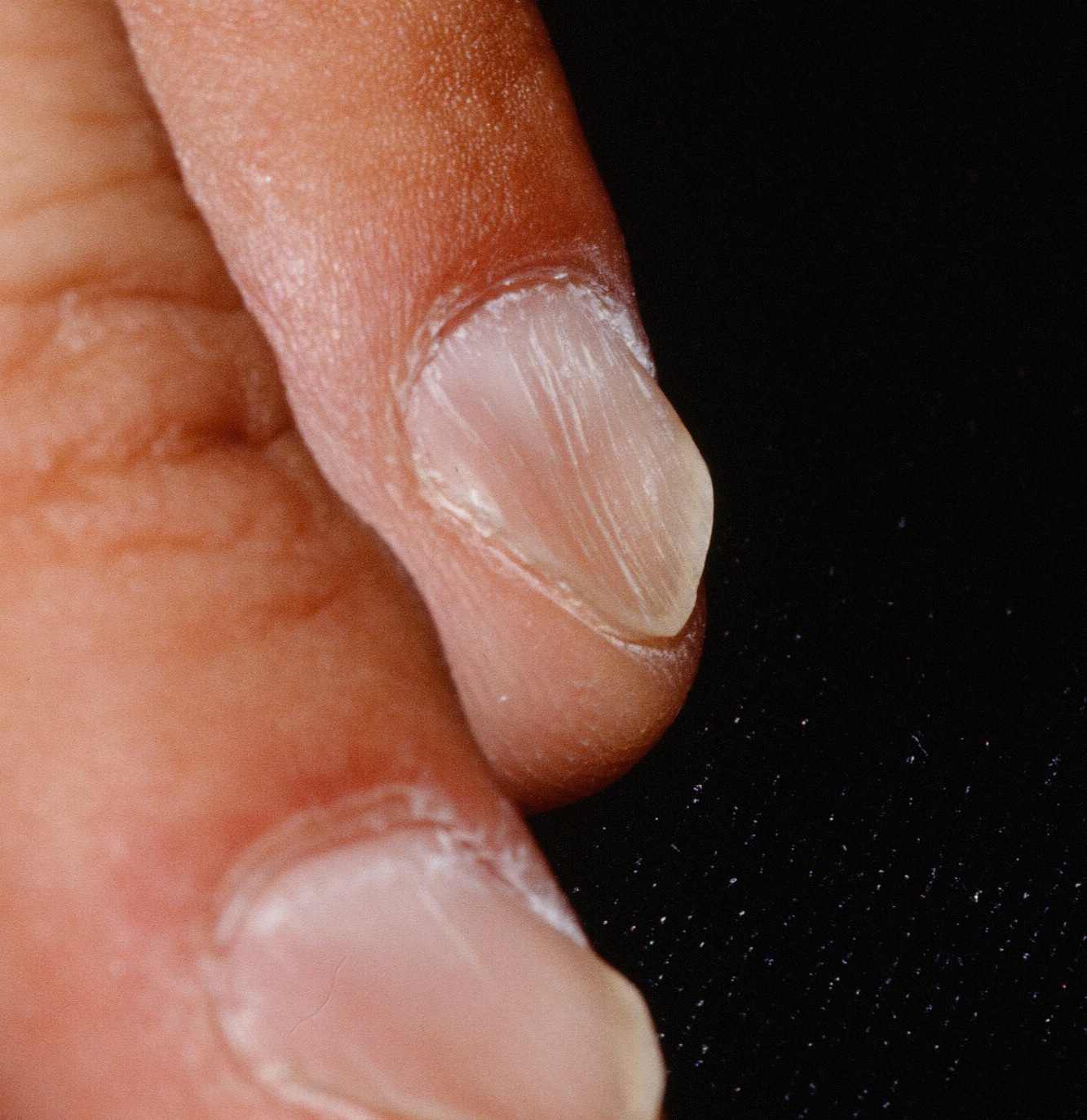
KOILONYCHIA
Koilonychia is a term that means the nails are transverse and/or longitudinally concave, like a spoon. "Koilos" means spoon in Greek.
- Koilonychia may be hereditary or acquired.
- Koilonychia of the great toe is common in children, e.g. 1-2 years of age. Work up should exclude iron or other nutritional deficiencies and anemia. Koilonychia is more common in children who walk barefoot or have tight fitting shoes. It usually resolves by age 9.
- Most cases are acquired in an adult and a thorough workup is indicated, although some cases remain idiopathic.
- In the adult form, it is classically associated with iron deficiency which may result from a variety of causes.
- The pathophysiologic mechanism of koilonychia formation is unknown, but one hypothesis is that that some local process affects the proximal nail fold and underlying tissue resulting in a relative depression of the middle part of the nail matrix. This may stem for example from poor digital blood flow or by local skin disease (e.g. lichen planus, psoriasis). Whatever the case, koilonychia results.
Possible Causes
- Hereditary, although this is rare. AD inheritance has been reported.
- Skin diseases, e.g. lichen planus, psoriasis, trachyonychia, onychomycosis.
- Iron deficiency of any cause. This may affect both children and adults.
- Plummer-Vinson syndrome which is iron deficiency associated with difficulty in swallowing, anemia, glossitis, cheilosis. Upper aerodigestive tract squamous cell carcinoma occurs in 3-15% of patients.
- Hemachromatosis (a condition with elevated iron).
- Hypothyroidism
- Chronic renal disease
- Poor nutrition and deficiencies in vitamin C, zinc, copper, selenium cysteine and other amino acids may be seen.
- Occupational koilonychia. This may occur through repeated trauma and/or chemicals inducing a contact dermatitis about the nail. Professions so affected include hairdressers (trauma and the toxic effect of chemicals used in permanent wave), car mechanics and those exposed to mineral oil, organic solvents and other irritating chemicals.
- Carpel tunnel syndrome
- Exposure to petroleum products
- High altitude (e.g., in Sherpas). Koilonychia has been observed in people living in high altitudes, i.e., > 3000 meters above sea level.
Clinical
The nail is concave with the plate thinned and the edges everted.
RegionalDerm
Homepage | Who is Dr. White? | Privacy Policy | FAQs | Use of Images | Contact Dr. White
It is not the intention of RegionalDerm.com to provide specific medical advice, diagnosis or treatment. RegionalDerm.com only intends to provide users with information regarding various medical conditions for educational purposes and will not provide specific medical advice. Information on RegionalDerm.com is not intended as a substitute for seeking medical treatment and you should always seek the advice of a qualified healthcare provider for diagnosis and for answers to your individual questions. Information contained on RegionalDerm.com should never cause you to disregard professional medical advice or delay seeking treatment. If you live in the United States and believe you are having a medical emergency call 911 immediately.
